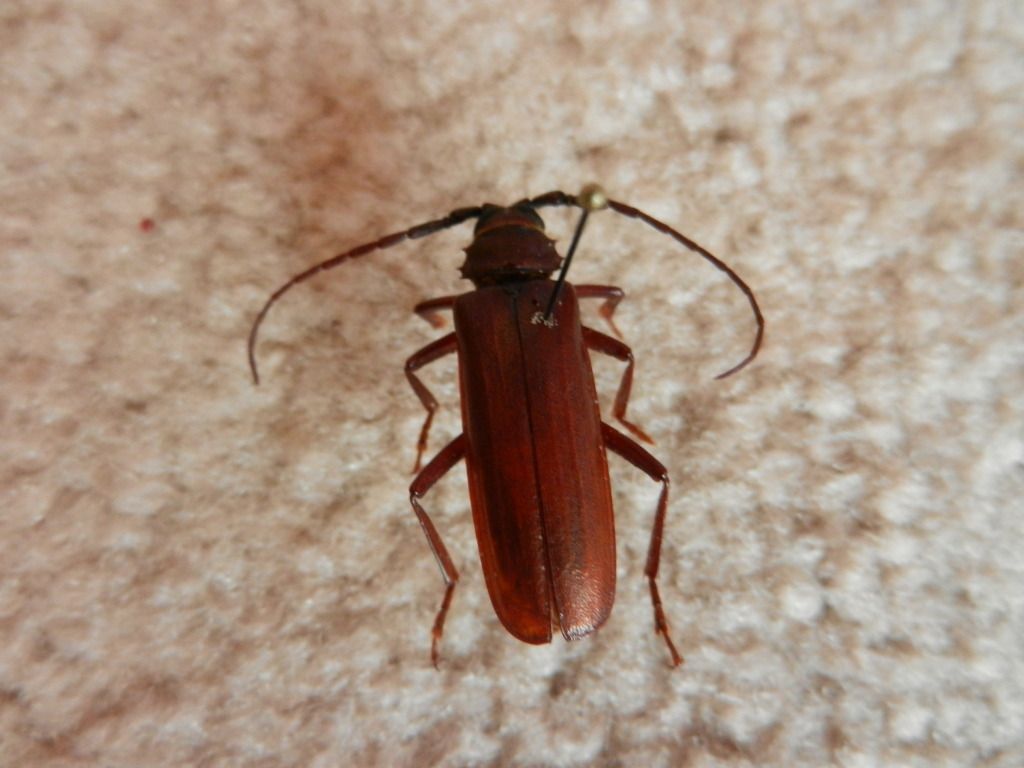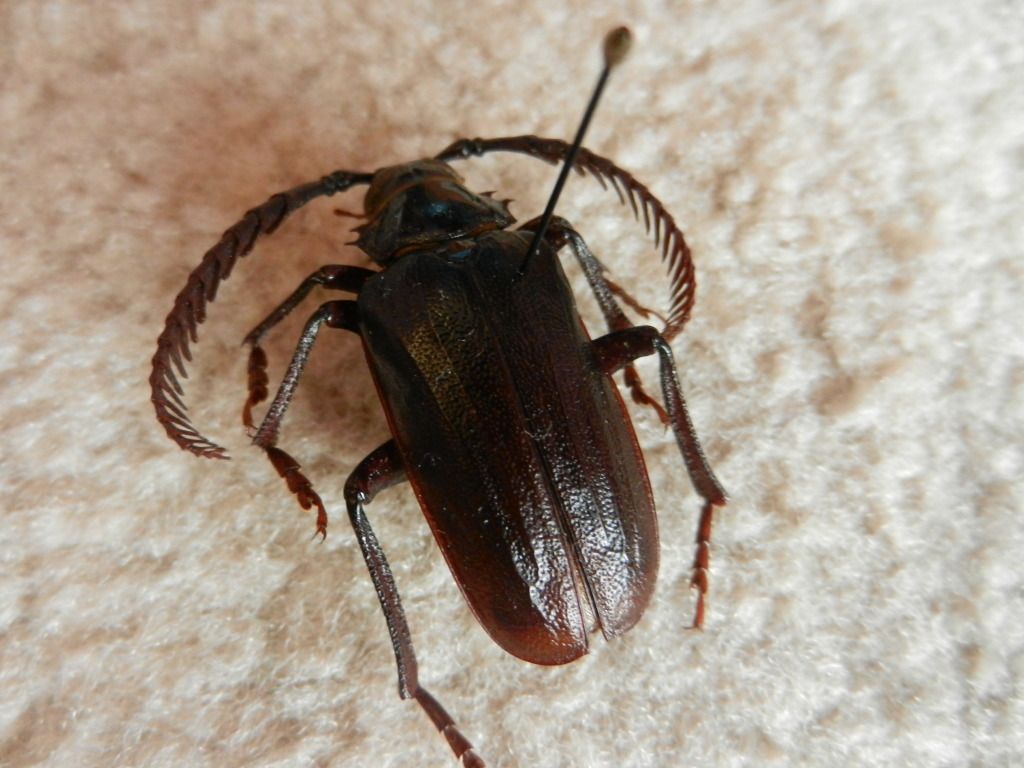|
|
Post by mantisdragon on Jul 30, 2012 7:55:10 GMT -8
Hi I am going to pin these beetles and would like to know what species and genus they are. Is it a long horn beetle? the smaller one I am pretty sure was a male. it is about 1 inch long. the other beetle with the feathery antenea is about 1 and a half inches long.   |
|
|
|
Post by admin on Jul 30, 2012 8:07:11 GMT -8
Both are longhorns (Cerambycidae). Looks like they are in the Genus Prionus, or closely related.
Where are you located?
|
|
|
|
Post by mantisboy on Jul 30, 2012 8:42:06 GMT -8
The top one is a Brown Prionid (Orthosoma brunneum, see photo). The bottom one is a male in the genus Prionus, as Clark suggested. Attachments:
|
|
|
|
Post by thanos on Jul 30, 2012 13:24:34 GMT -8
The second one is a male of Prionus (Neopolyarthron) imbricornis.
Thanos
|
|
|
|
Post by mantisdragon on Jul 31, 2012 7:12:43 GMT -8
are you kidding me that the first picture is a male of Prionus (Neopolyarthron) imbricornis? isn't that the same as the beetle in my other post 'is this a sawyer beetle' that is just not fair! I had a male and didn't know it! I could have mated her. I was asking the identification on a different bug site but no one knew what species my little male was and before I got here he died. so sad.
Does anyone know how to attract and or a find male Prionus (Neopolyarthron) imbricornis? I randomly found the first one on my back window at night.
|
|
|
|
Post by thanos on Jul 31, 2012 20:46:13 GMT -8
''are you kidding me that the first picture is a male of Prionus (Neopolyarthron) imbricornis?'' - You're meaning the second picture  . ''I was asking the identification on a different bug site but no one knew what species my little male was and before I got here he died. so sad.'' - A good reason to ask for help more on insectnet than on other sites  . ''Does anyone know how to attract and or a find male Prionus (Neopolyarthron) imbricornis? I randomly found the first one on my back window at night.'' - Put a strong light at your garden : Prioninae fly at hot evenings and are attracted to lights oftenly. Thanos |
|
|
|
Post by mantisdragon on Aug 2, 2012 20:39:24 GMT -8
ok so this beetle is a female of the giant beetle i have?  and i was thinking what if I put them female out in a cage near a light at night and see if it attracts a male. Would that possibly work? |
|
|
|
Post by thanos on Aug 2, 2012 21:23:49 GMT -8
No, this pictured specimen here is a male of Prionus imbricornis. The female of this species is the 'huge' beetle you showed in your other post. ''and i was thinking what if I put them female out in a cage near a light at night and see if it attracts a male. Would that possibly work?'' - Yes, it could work, as a male could have been attracted by the female's pheromone. If you want to catch many males, best is to use pitfall traps baited with female Prionus pheromone, as shown here: www.nyshs.org/pdf/NYFQ%20Summer%202011.cmc/Pages%2017-20%20NYFQ%20Summer%202011.cmc-5.pdf But the most simple is to put a strong light close to the place you collected these specimens. This way you will catch specimens of both sexes also, not only males  ! But, take into account that, even if you will manage to catch many pairs and to mate them, the larvae of this species feed in the roots of fruit trees (taking years to develop), and this makes it too difficult (if not virtually impossible) to breed them successfully. On the other hand, Scarabaeids (e.g. Osmoderma) are much easier to breed as their larvae feed in the soil of trees. Thanos |
|
|
|
Post by arrowhead on Aug 9, 2012 23:38:01 GMT -8
Here in North Carolina I've caught the feathery antennaed ones more frequently after brief to moderate rains. They are attracted to lights but sometimes come to the fringes and climb around in the grass.
|
|
w1
Full Member
   Have had a great start to my season
Have had a great start to my season
Posts: 123
|
Post by w1 on Aug 11, 2012 14:17:09 GMT -8
|
|